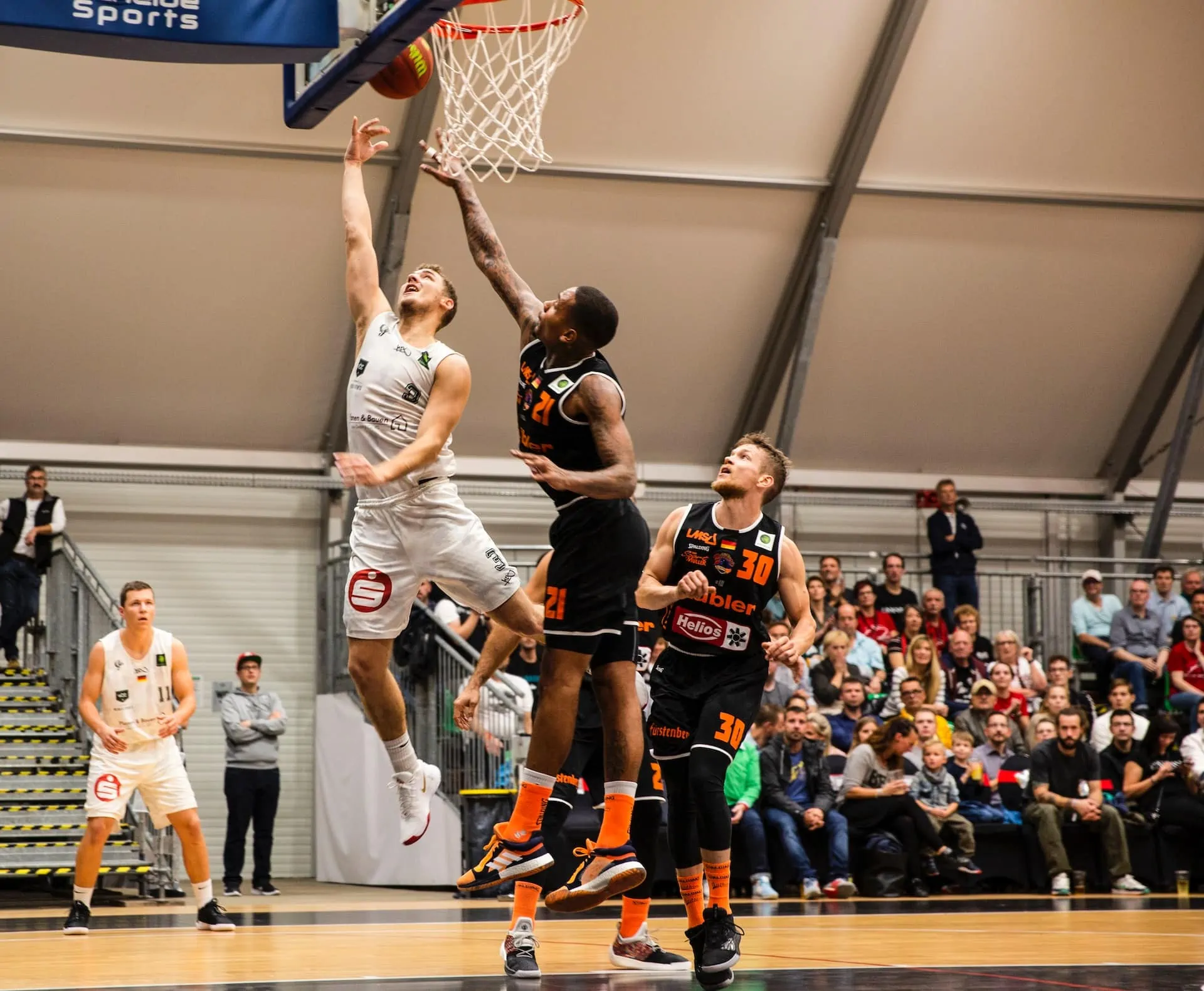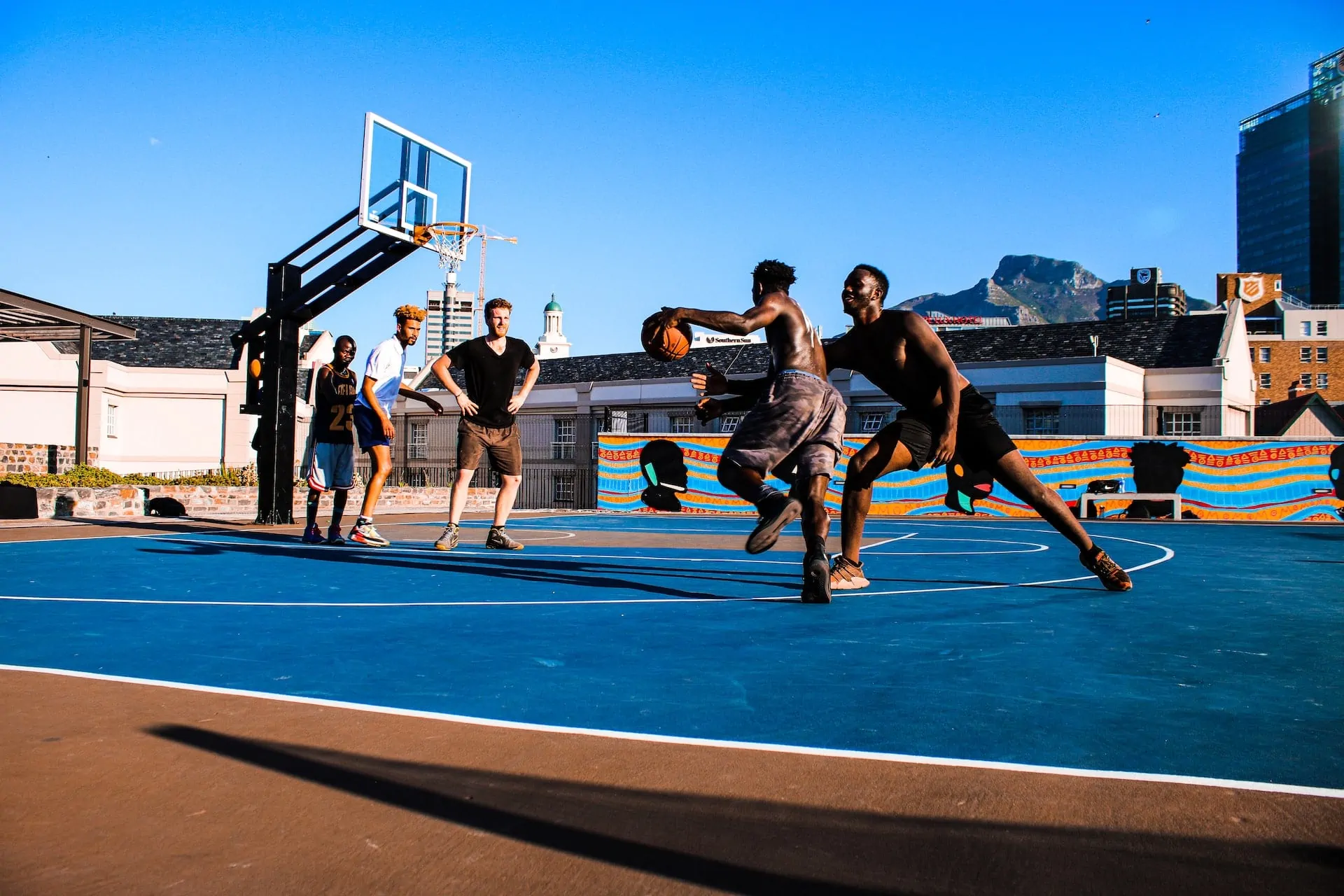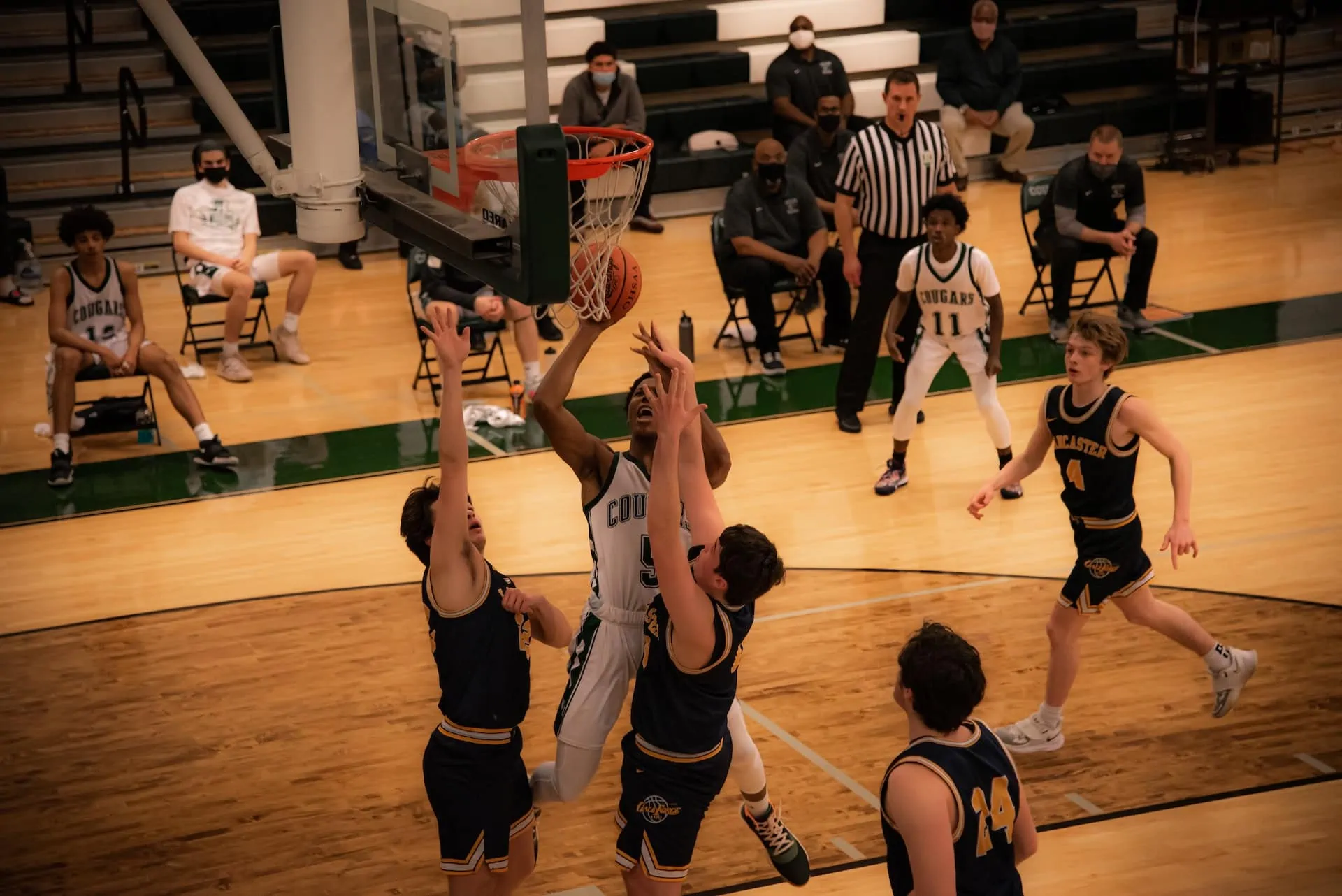Have you ever shouted at the television in disagreement with a ref’s foul call? If you have, there’s a chance you were yelling about a basketball reach in foul because they tend to be the most controversial. However, you may be surprised to discover that the term reach in foul isn’t in any official rulebooks, whether in the international leagues or the professionals.
The term is mainly used and popularized by commentators, analysts, and coaches when describing fouls committed while attempting a steal. However, they also sometimes use it when a defensive player tries to impede an offensive player’s movement by using the hand check.
In this article, we will discuss what is a basketball reach in foul and what happens when they are called. So, if you’re ready, let’s get started!
 What is Reach In Foul?
What is Reach In Foul?
As we’ve said, you won’t find any basketball reach in foul rule specifically spelled out in any official rulebook. Reaching in for a steal, after all, is not an illegal move. However, upon closer inspection, you’ll find that both FIBA’s Official Rules and the NBA Official website elucidate that while the act of reaching in for a steal is not, in fact, a foul, any unintentional impact on the offensive player’s body, on the other hand, is still a personal foul.
FIBA and the NBA treat fouls the same way but with slight differences in implementation. The general policy is that the defense cannot restrain the offense’s movement in the court with or without the ball. In the NBA, we often hear commentators call out a basketball reach in foul when a defensive player’s forearms or hands, either intentionally or unintentionally, negatively impact an offensive player’s “speed, quickness, balance and/or rhythm.” In short, contact between a defensive player’s upper limbs and any part of the offensive player’s body may be considered illegal if the referees judge that it restricts freedom of movement.
What constitutes an illegal contact makes a basketball reach in fouls challenging to call. This is because the rules state that illegal contact only when the act negatively affects the offensive player’s speed, balance, or rhythm. For strong players like LeBron James and Shaquille O’Neal, who can easily power through a defensive player’s steal attempt, it may be challenging to determine whether the contact impacted their movement.
 When Does Reaching In Become a Foul?
When Does Reaching In Become a Foul?
Reaching in for a steal is not a foul in itself. Good defenders can often reach in and not get called for a foul because their attempts are precise and controlled. A foul is only committed when the defensive player makes illegal contact with the offensive player.
This is where the judgment of officials comes into play. First, they must determine whether or not the contact was significant enough to negatively affect the offensive player’s speed, balance, and/or rhythm. If they decide it did, then a personal foul will be called on the defense, which might also be called a reach in foul by commentators and analysts.
If the contact does not affect the offensive player’s movement, referees are instructed to let the players proceed. This is why referees allow defenders to put their forearms on the back of offensive players who are backing down in the post. Despite the constant contact with the ball carrier’s body, they’re not negatively affecting their speed, balance, or rhythm.
Furthermore, even if the contact between any part of an offensive player and a defensive player’s upper limbs affects the former’s progress, game officials might still rule it a non-foul if the contact is incidental and was initiated by the offensive player. In this sense, only deliberate attempts to impede a ball carrier’s progress can cause the officials to blow their whistles for a foul.
On the other hand, when a defender uses his forearms or hands while keeping pace with their defensive assignment to impede their movement, it’s most likely going to be called a personal foul as officials are going to assume that the contact is negatively impacting the ball carrier’s speed and momentum.
The most common foul that may be considered a reach in foul is when a defensive player attempts a steal but inadvertently makes contact with any part of the ball carrier’s body. When this happens, officials may call for a foul on the defensive player as they have negatively impacted the offensive player’s movement and rhythm.
 What Causes a Reach in Foul?
What Causes a Reach in Foul?
There are several reasons why a defensive player might commit a reach in foul. The most common is simply that the player misjudged the distance between them and the offensive player and made contact while trying to steal the ball. Another reason is that the defensive player may have been too aggressive in their attempt to make a steal and ended up making contact with the offensive player.
To avoid getting called for a reach in foul, defenders must make a steal attempt while the ball is not in contact with the ball handler. This prevents unintentionally initiating illegal contact.
Reach in fouls may also occur even if the defensive player isn’t in the act of reaching in. For example, the hand check ban in the NBA has made it illegal for the defense to stay in contact with the ball carrier whether or not they’re using the contact to restrict movement.
FIBA, on the other hand, is much more lenient. The rulebook states that officials must first judge whether the contact gives the defense an unfair advantage to the defense before they call it a personal foul. However, to combat this leniency, FIBA has instituted a cylinder principle in the league that dictates that offensive players are entitled to all the vertical space from their feet as if they were in an imaginary cylinder. Any contact within that cylinder may be called for a foul if it’s initiated by the defender, even if it does not impede his progress. However, if the offensive player decides to lean beyond the cylinder or extend his hand beyond that cylinder, refs will be more lenient in favour of the defender if contact happens between him and his defender.
Holding onto an offensive player may also be called for a foul. Whether it’s an arm, torso, or even the jersey of an offensive player, it’s an automatic personal foul if a defensive player holds on to them.
Pushing an offensive player also causes a personal foul. Pushing is any form of forceful contact with an offensive player to gain an advantage.
 Is Reaching a Personal Foul?
Is Reaching a Personal Foul?
A reach in foul is technically classified as a personal foul, which adds to the player’s total personal foul tally. They’ll be ejected from the game if they reach a certain number of personal fouls.
And because it’s considered a personal foul, it also adds to the overall team fouls. So if the defense accumulates enough fouls, they’ll be put in the penalty situation.
 5 Rules and Penalties for a Reaching Foul Violation
5 Rules and Penalties for a Reaching Foul Violation
Reach in fouls can result in many different scenarios. They are:
Shooting Foul
Because reach in fouls are technically simple personal fouls, the same penalties apply. So, if the foul is committed while the ball carrier is in the act of shooting, it will be considered a shooting foul, and he will be awarded two free throws.
Non-Shooting Foul
On the other hand, if the reach in foul occurs while the offensive player is awarded possession of the ball, the shot clock is reset to 14-seconds. This essentially gives the offence new possibilities to create a scoring opportunity.
However, if the defensive team is in the penalty situation, each subsequent reach-in foul, whether the ball carrier was in the act of shooting or not, will be awarded two free throws. This effectively prevents the defense from playing for the steal too much in a ball game.
Blocking Foul
Sometimes, even if the defense is not actually attempting to reach in to steal the ball, a reach in foul may still be called. This happens when the defensive player uses his forearms or hands to impede the progress of a moving offensive player. This may also be called a blocking foul in basketball.
Flagrant 1 Foul
If an official deems a reach in foul to be excessively forceful, he may decide to call it a flagrant foul instead. This is a much more severe penalty as it results in an automatic free throw for the ball carrier and possession of the ball.
The defensive player who committed the foul will also be tacked with a technical foul in basketball. If he commits another flagrant foul or an unrelated technical foul, he will face automatic ejection from the game.
Flagrant 2 Foul
In some cases, officials may even call a Flagrant 2 foul on the fouling player if they recognize an unsportsmanlike intention from the defensive player. For example, officials call this often if the committing player seems to be making an active attempt to hurt their opponent instead of making a play for a ball steal. The penalty for a Flagrant 2 in the NBA is two free throws for the fouled player, an automatic ejection, and one game suspension for the fouling player.
Wrapping Things Up: What is a Basketball Reach In Foul?
Reach in and all types of fouls, for that matter, are a vital part of a basketball game. They help to maintain order on the court and ensure that players are not taking advantage of their physical advantages. Furthermore, it helps keep the game flowing and players from getting injured by penalizing too rough a play.
The number of reach in fouls has increased over the years due to the NBA instituting the hand check ban and FIBA’s cylinder principle. In a way, it’s one of the referee’s most effective tools in controlling the game. Since these rules were instituted, there have been much fewer on-court altercations and more fluidity to the game. As such, it’s essential to understand what constitutes a foul so you can avoid them or take advantage of them when necessary.
Mastering the art of reaching in without fouling can elevate a player’s defensive game. Now that you have a better understanding of reach in fouls, you can work on ensuring that your defensive game is up to par. Stay disciplined and make sure to only make contact with your opponents when you’re confident it won’t be called for a foul.
We hope you enjoyed this post! If you did, be sure to check out our other basketball FAQ articles here.
Want to get better at basketball?
Join our newsletter & get our comprehensive
101-page basketball guide.
Become a better baller today 👇


 What is Reach In Foul?
What is Reach In Foul? 
 When Does Reaching In Become a Foul?
When Does Reaching In Become a Foul? 
 What Causes a Reach in Foul?
What Causes a Reach in Foul? 
 Is Reaching a Personal Foul?
Is Reaching a Personal Foul?  5 Rules and Penalties for a Reaching Foul Violation
5 Rules and Penalties for a Reaching Foul Violation 

